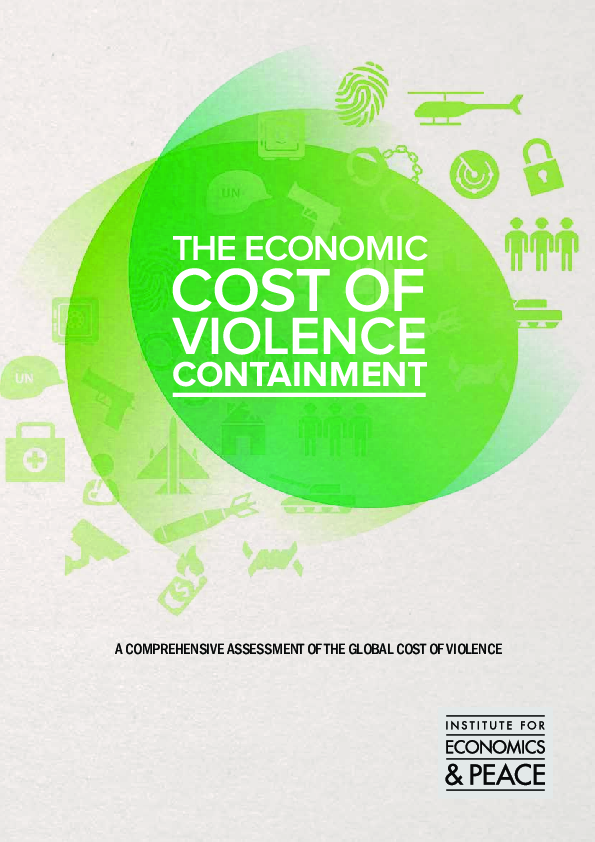
Reports
The economic cost of violence containment: A comprehensive assessment of the global cost of violence
Publication year:
2014
English
Format:
pdf (2.9 MiB)
Publisher:
The Institute for Economics and Peace
The Institute for Economics and Peace has released a comprehensive assessment of the global economic cost of violence containment. According to the report, the global economic cost of violence in 2012 was US$9.46 trillion, which represents 11% of Gross World Product. It estimates the cost of violence to the global economy, including calculations for 152 countries, detailing the costs of thirteen different types of violence.
Violence containment spending is understood as any economic activity that is related to the prevention or consequences of violence; it includes direct costs such as the medical cost of a victim, and indirect costs such as the loss of human capital when someone is displaced as a result of violence. The findings outlined in the report show that violence containment costs US$1,300 per person per year and is almost double the size of the world’s agriculture industry. To put this in perspective: violence containment spending is over 2.4 times the size of the total GDP of Africa. While some spending on violence containment is necessary, surplus spending on inefficient programmes can be detrimental to a country’s economic growth and wellbeing. Overspending on violence containment restricts the resources that can be allocated to other productive institutions such as education and healthcare. Some of the countries that have the highest violence containment expenditure, are also among the poorest, with the cost of violence dwarfing foreign aid. The three countries with the highest level of violence containment spending as a percentage of GDP are North Korea, Syria and Liberia. The military accounts for 70% of North Korea’s violence containment expenditure, which is equivalent to 20% of the country’s total GDP.
Read full abstract
View & Download
Document information
Format
Content type
Rights
© Author/Publisher
Found a mistake? Help us improve!
If you have noticed a document assigned to the wrong author or any other inaccuracies, let us know! Your feedback helps us keep our data accurate and useful for everyone.
Share
Link
